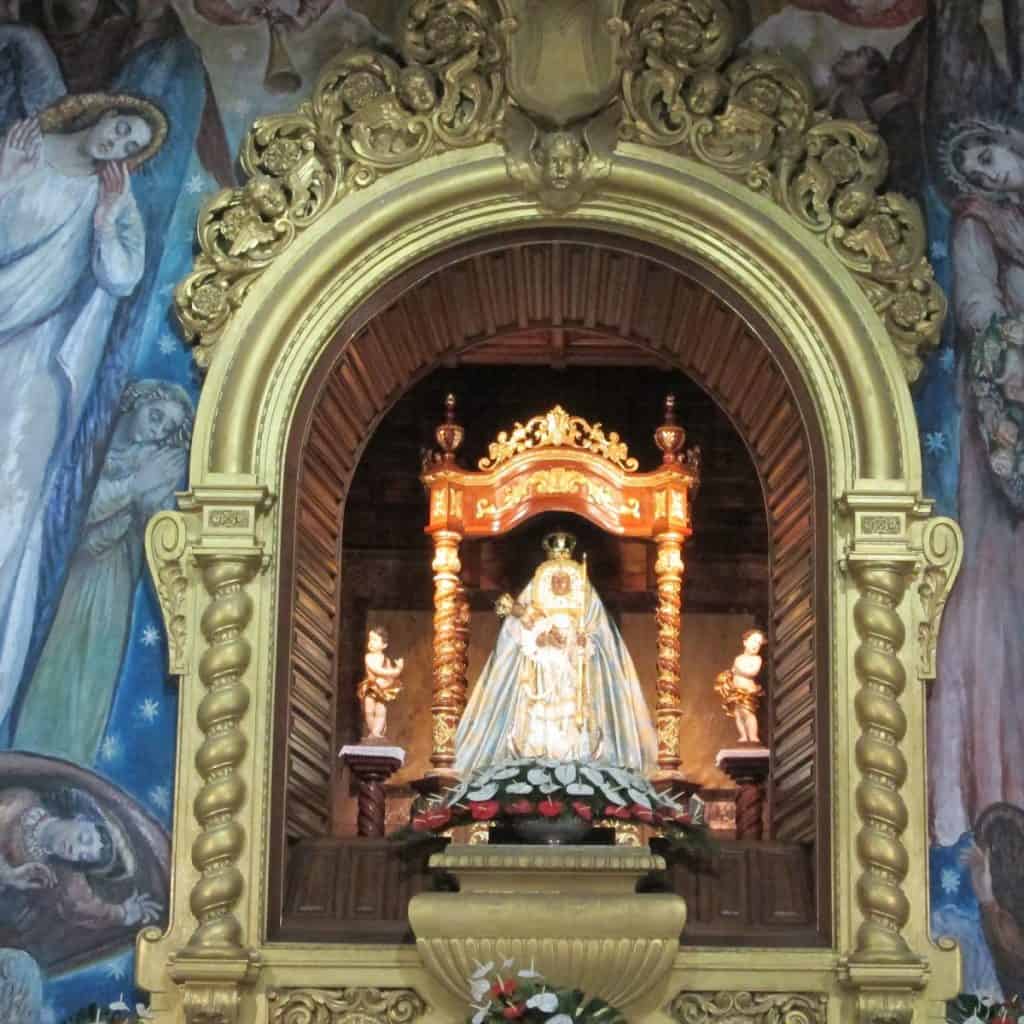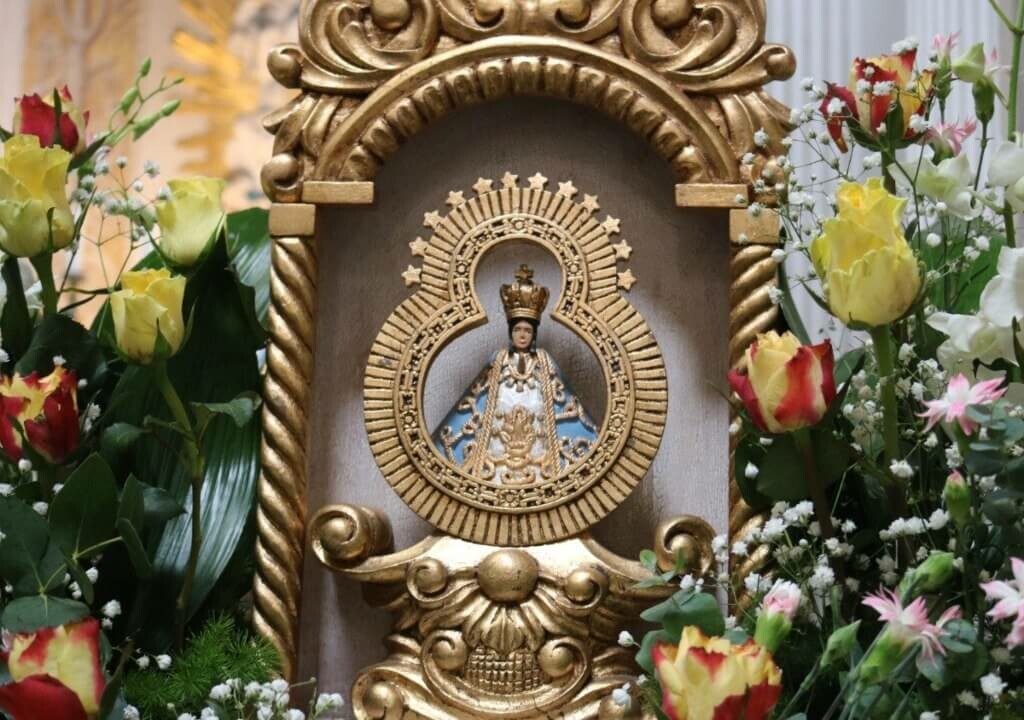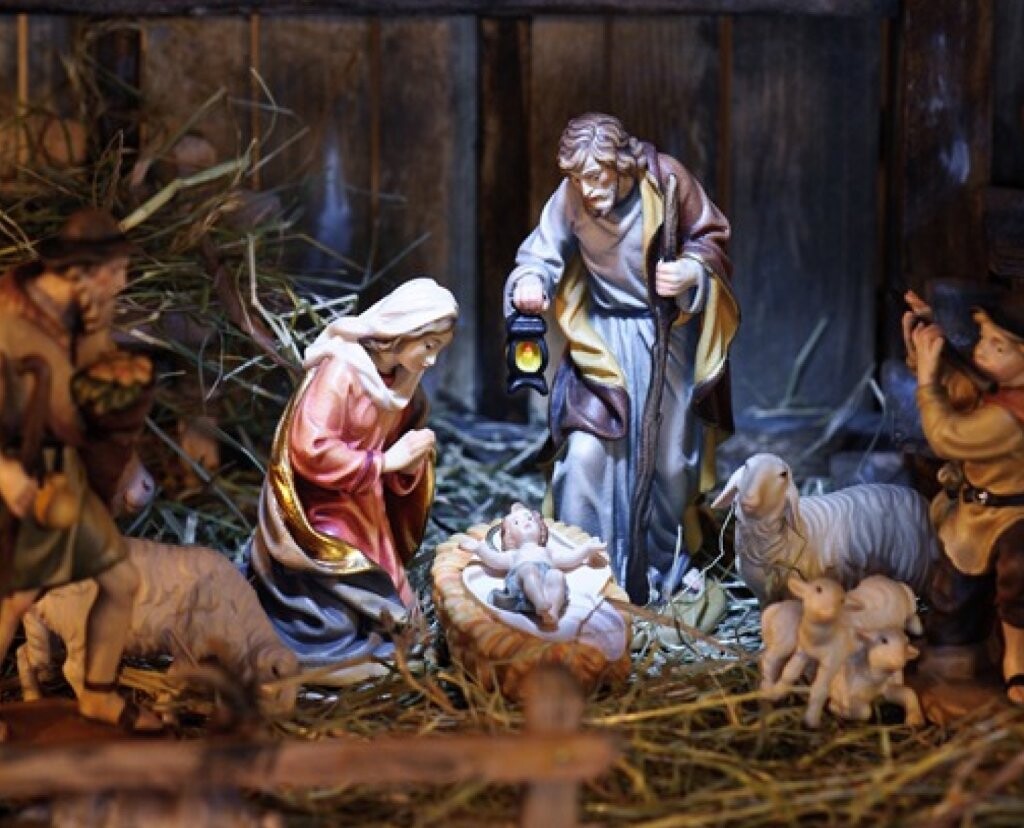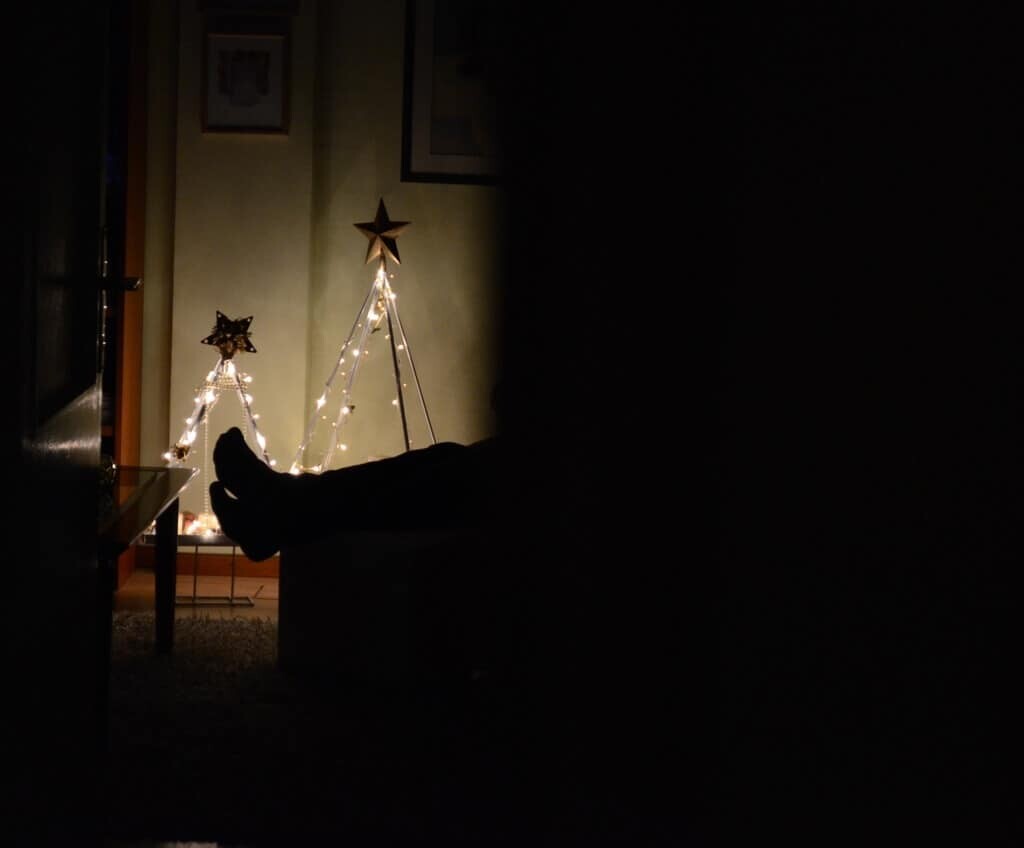Our Lady of Candlemas is an invocation to the Virgin Mary that originated in Tenerife, Spain. The word “candelero” or “candelas” refers to light, the holy light that illuminates the path to salvation and encourages faith in God.
Our Lady of Candlemas — History and Feast of Lights
Our Lady of Candlemas is celebrated on February 2, a day that commemorates the Presentation of Jesus in the Temple of Jerusalem and the purification of Mary.
This ceremony took place by the Mosaic Law, which required that forty days after the birth of a child, he or she be brought to the Temple to be presented to the Lord.
For this reason, Mary and Joseph brought Jesus to the Temple with lighted candles as a sign of homage. The Catholic Church celebrates this event by lighting candles at midnight as a symbol of purification.
Feast of the Presentation of Jesus and the Purification of the Virgin Mary
Beginning in the 7th century, Pope Sergius I established an ancient tradition in which the faithful would make a nightly procession with lighted candles in honor of the Feast of the Presentation of Jesus and the Purification of the Virgin Mary.
This practice was based on the phrase from Luke 2:32, “light to enlighten the Gentiles and the glory of your people Israel. After the procession, the candles were taken to their homes to be lit when special prayer was needed.
In the 5th century, this feast was known as “La Candelaria” or “Feast of Lights” and was introduced into the Western liturgy in the 7th century.
Mother of Our Lady Santa Maria de la Candelaria
Our Lady of Candelaria is the principal patron saint of the Canary Islands and the patron saint of the island of Tenerife.
She was proclaimed as such on December 12, 1867 and received the canonical coronation on October 13, 1889, becoming the fifth Marian image to be crowned in Spain, after the Virgin of Pilar (Zaragoza), the Virgin of Covadonga (Asturias), the Virgin of Montserrat (Catalonia) and the Virgin of the Abandoned (Valencia).
In 1994 she was named honorary and perpetual mayoress of Villa de Candelaria. The carving of the Virgin is said to have appeared at the mouth of the Chimisay ravine (Güímar) around 1400-1401, although the official history was written by Fray Alonso de Espinosa in 1594.
Our Lady of Candlemas Story in Spain
The two shepherds were trying to put their cattle in a cave when they saw that the cattle did not want to go in. Investigating, they looked into the mouth of the ravine and discovered a holy image at the edge of the sea that seemed to be alive.
Because of the prohibition against speaking to or approaching women in the desert, one of the shepherds motioned for her to leave, but her arm remained immovable. The other shepherd tried to attack her with his knife and hurt himself.
Terrified, they fled to Chinguano and went to the cave palace of King Acaymo to tell him what had happened.
The king went to see her, accompanied by his advisers
The queen said nothing, but no one dared touch her. The king decided to have the wounded shepherds themselves pick her up and bring her to the palace. When the shepherds touched her, they were healed. The king understood that the woman with the child was more than just an image.
He tried to carry the image, but after a while he needed help. That is why there is a cross at the place of the apparition and a shrine dedicated to Our Lady of Succor at the place where the king asked for help.
The picture was taken in a cave near the king’s palace, which is now a chapel. Later, a young man named Anton, who had been taken as a slave by the Spaniards and managed to escape, recognized the image as the Virgin Mary.
Baptized, he told the king and his court about the Christian faith. They recognized the Virgin Mary as the “Mother of the Creator of Heaven and Earth” and took her to the cave of Achbinico or San Blas for everyone to worship.
Since then, she has been invoked as “Nuestra Señora Santa María de la Candelaria”, the first Christian sanctuary in the Canary Islands.
The image was stolen and taken to Lanzarote
Our Lady of Candlemas was stolen from her cave in Tenerife and taken to Lanzarote, where the carving of the Virgin is said to have turned towards Tenerife. After a plague, which the Spaniards attributed to the theft, the image was returned to the cave.
From then on, devotion to the Virgin spread throughout the Americas and Hernán Cortés wore a medallion with her image around his neck. In 1826, however, the image was lost in a flood.
At present, there is a faithful copy of the original image, made in bronze, in the cave, along with an image of San Blas.
The Feast of Lights, which is actively celebrated in many parts of the world, is a celebration of the ancestors that dates back to ancient calendars.
Feast of Candlemas
Candlemas is a feast with roots that go back to the time of conversion to Christianity from a pagan festival of purification. It is characterized by a variety of traditions ranging from the ritual consecration of candles to the celebration of light.
Candles were the means of lighting homes, so the holiday was redirected to the celebration of light. Candles were used to protect families from sickness, lightning and hail, as well as to ward off evil spirits and protect flocks and farm animals.
Candlemas is a holiday with special meaning for all women who wish to have a child. Traditionally, in some regions, only women were allowed to participate.
The lighting of the blessed candles was very important because it was believed that they could help women give birth, find a husband and conceive a child. In addition, processions were held through the fields and the number of candles blown out by the wind was used to predict the coming year.
Candlemas is thought to have replaced the Roman “Lupercalia”, celebrated in mid-February in honor of the she-wolf that suckled Romulus and Remus, the founders of Rome.
Cult of Luperco
This celebration also paid homage to Luperco, or Faun and consisted of young people dressed in goatskins dancing and beating the ground and vegetation with lighted torches, rituals that ensured the fertilization of nature.
After February 1, the Calendas took place, when the goddess Juno, with goat’s horns, shield and spear, received rye bread from the virgins. This was the time of purification before the fertility rites of the Lupercalia.
The word “Candelaria” comes from the expression “Festa Candelarum”, the Festival of the Candles, a tribute to the god Pan, in which the streets of Rome were walked all night with lighted candles.
Candlemas Ritual
Candlemas is an important celebration for the elderly, as it marks the moment when nature becomes fruitful again after the end of winter.
The story behind the celebration goes back to San Blas, whose life was marked by a candle. A widow once had a pig that was stolen by a wolf, so San Blas ordered the wolf to return the animal to the woman.
When the wolf was captured, the widow slaughtered the pig and gave the head and feet of the animal to St. Blaise along with some bread and a candle. He then promised a good fortune to those who would light a candle with his name in a chapel each year.
This is how the feast of Our Lady of Candlemas and St. Blaise was born in the Catholic calendar, giving rise to numerous popular festivities.
Imbolc
Imbolc was the ancient Celtic lunar festival on February 2, meaning “around the belly” or “in the navel” in Old Irish.
The holiday is associated with rituals of fertility, light and purification and heralds the arrival of spring. Although Imbolc takes place in the coldest season of the year, it marks the middle of the long night season.
Oilmec is its alternative name, meaning “sheep’s milk”, referring to the time when sheep give birth.
Dairy products are an important part of the celebration. Imbolc has generally been celebrated in places such as Galicia and Celtiberia in Spain, Gaul and Brittany in France, Ireland, Cornwall, Scotland, Wales and Britain in the British Isles.
February marks a new beginning for the sun, which begins to gain strength to warm the earth; the days grow longer, seeds germinate in the soil and the ewes are ready to suckle the lambs.
This month is the time when fertility begins in Mother Nature, preparing for the explosion of Spring. Briganti, Brid, or Brigit, the Mother Goddess of the Earth, was known as “Excelsa” or “Alta” protecting young women and flocks.
A burning torch was used as a symbol of this divinity and the sacred fire served as a call to the sun to warm the earth strongly after the winter. In addition, Briganti was a protector and healer and sacred wells were consecrated to her.
The festival was celebrated by lighting bonfires in the hills
Villagers made candles from animal fats and also made straw dolls called “brides” to offer to their wives as a symbol of fertility.
With the arrival of Christian monks, the Celtic goddess Brigit was identified with Saint Brigid and in Ireland, she became their patron saint.
February 1 is the Day of Wisdom in the Celtic calendar and is the appropriate time to light candles in every room of the house, or every window, in honor of the Sun, from sunset until sunrise.
It is also an opportunity to clean or bless the house, seek inspiration and clear the mind of negative thoughts and attitudes.
Read more
- IMBOLC – Festival of Purification – Festival of Lights
The Celtic festival of Imbolc, on February 2, celebrates the arrival of spring and the awakening of Mother Earth. It is a pagan festival that dates back to ancient times when the Romans called it Lupercalia or The Feast of God’s Bread.




